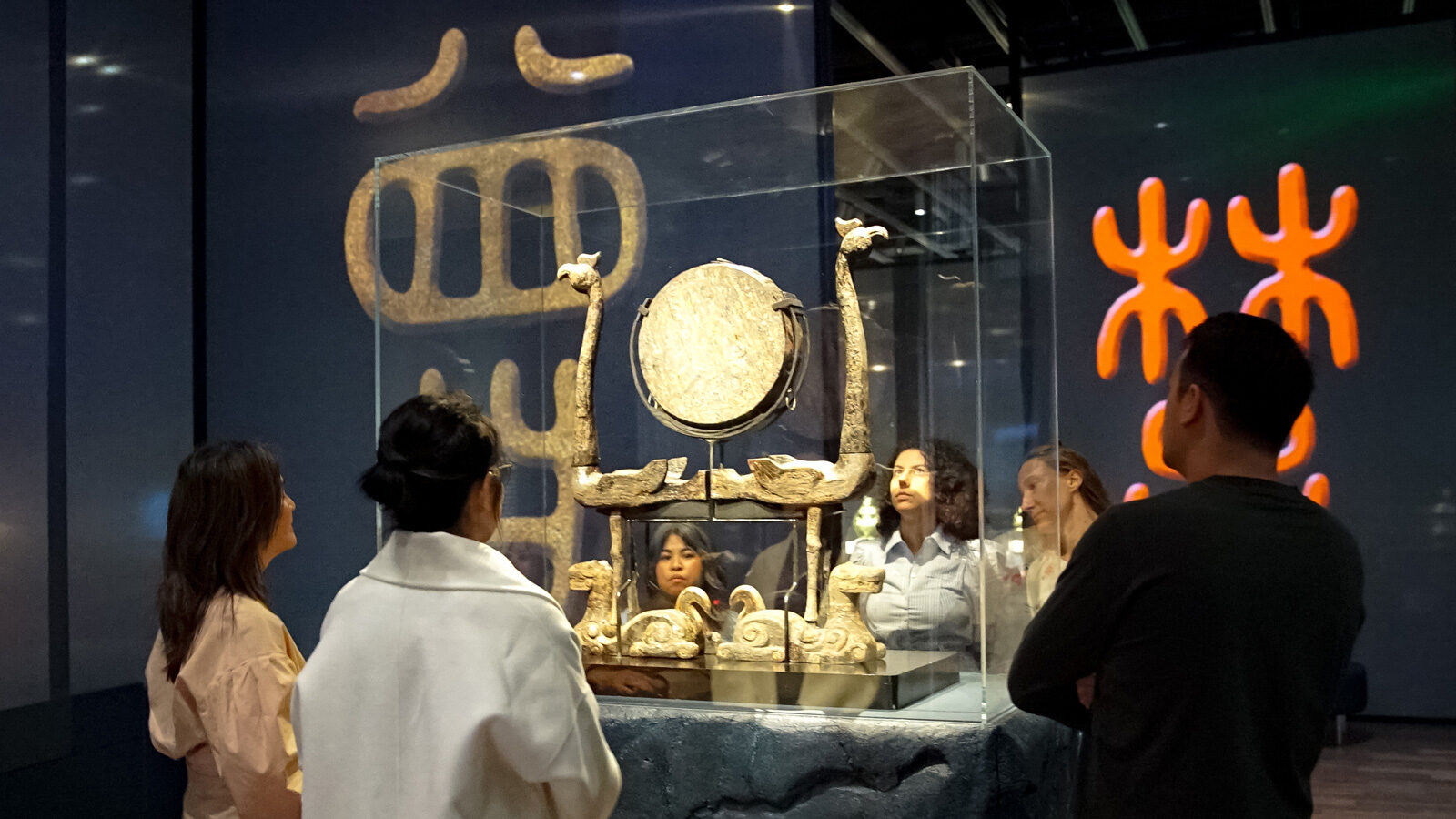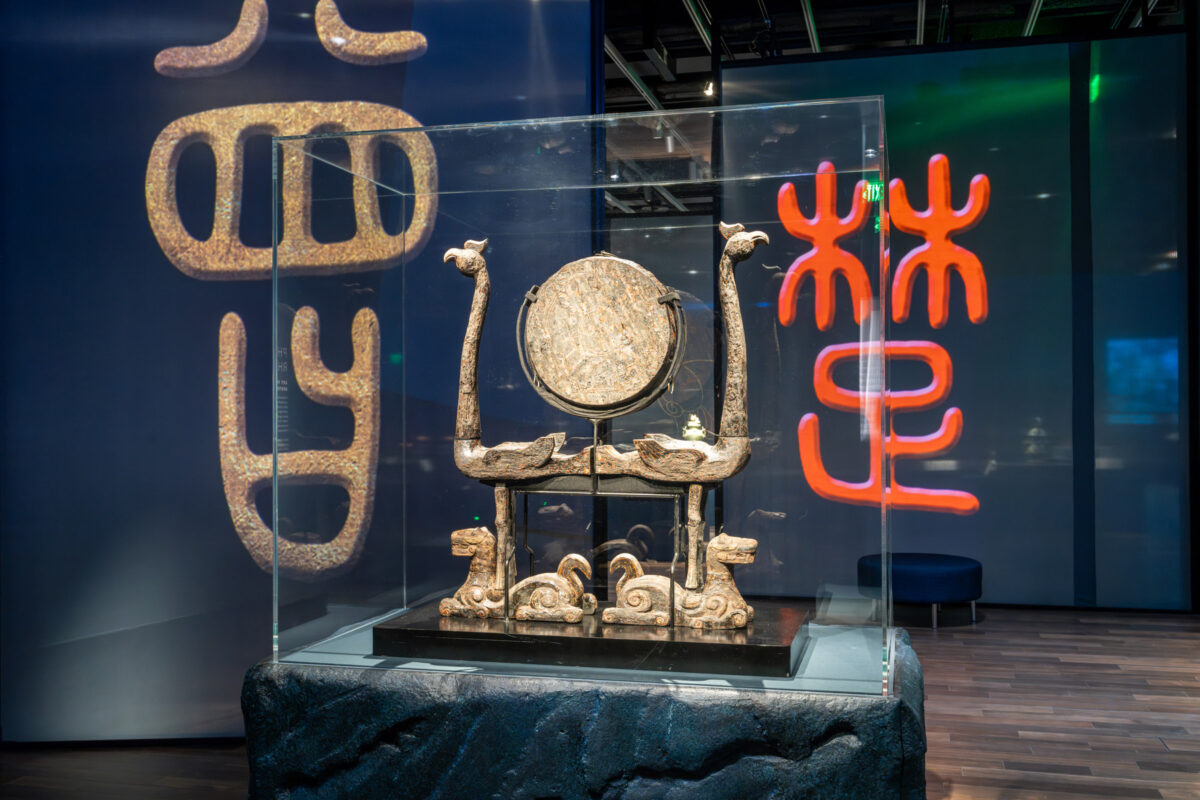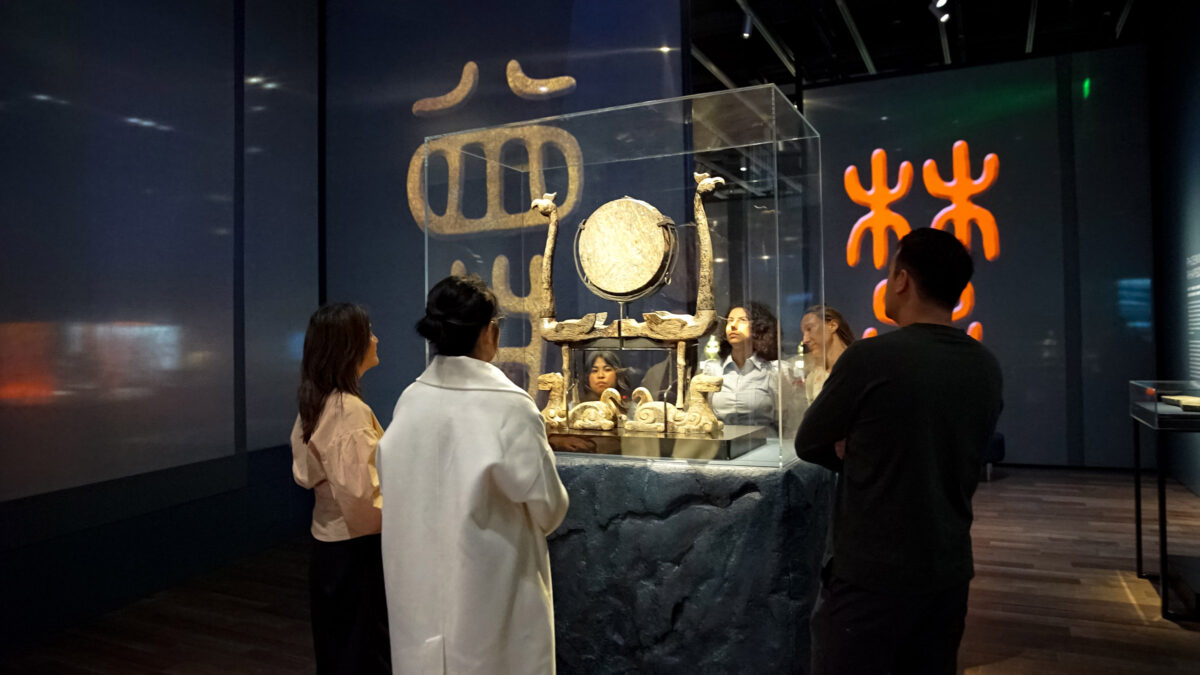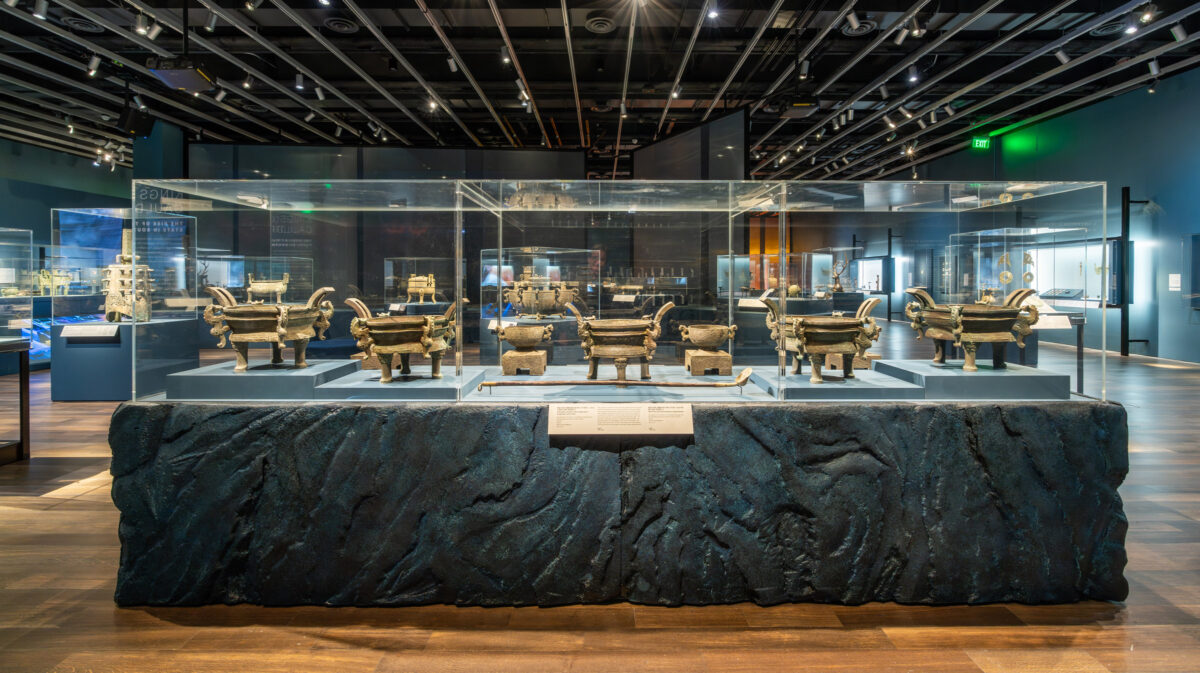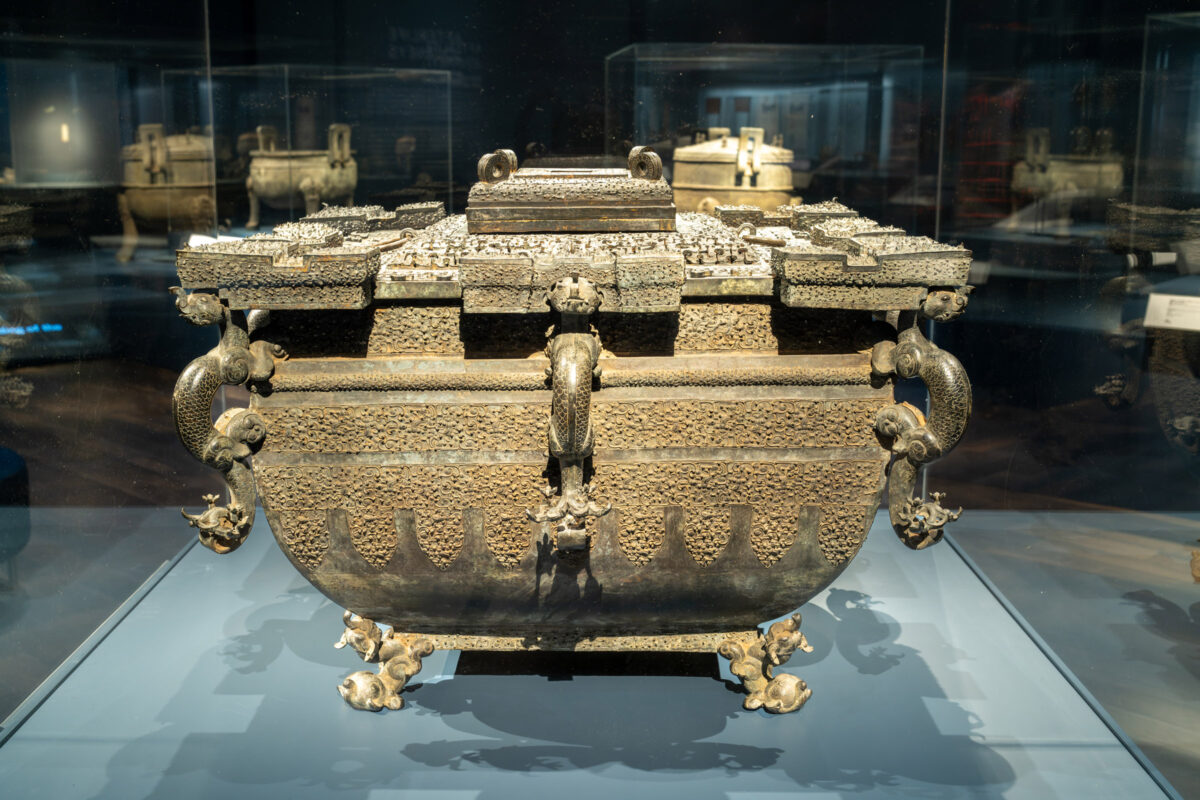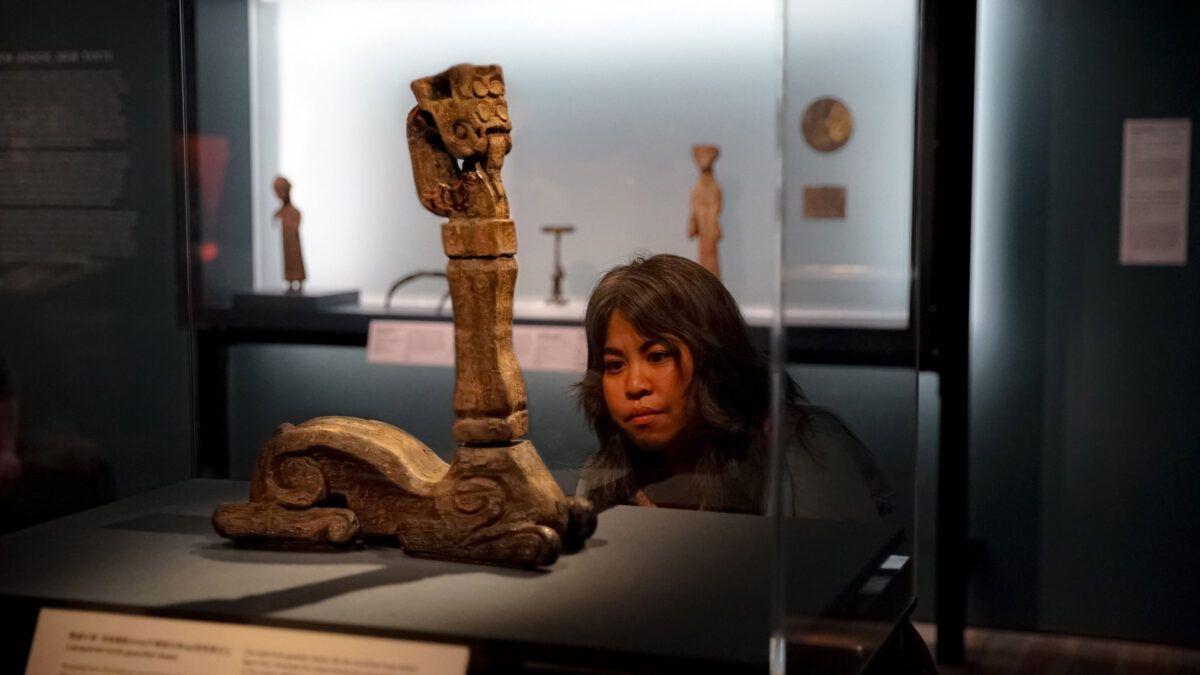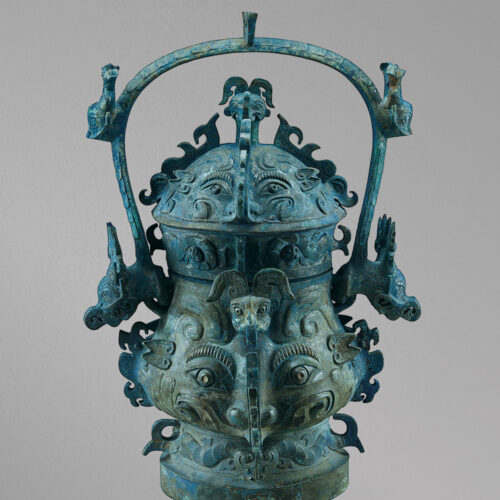Show more . . .
Yet as the remarkable artifacts in this exhibition attest, these southern kingdoms were in fact
technologically and artistically far more advanced than scholars had assumed before the rise of modern archaeology. Their extraordinary material culture reflects a shamanistic spirituality, including belief in human-animal communication, fascination with river and mountain deities, rituals filled with bell and drum music, and a proliferation of magical phoenix totems. Ubiquitous in the art and design of this region, the phoenix reflects an abiding interest in transcendence and immortality; today, with this exhibition showcasing their forgotten glory, these mysterious kingdoms rise from the ashes to claim their rightful places in the history of Chinese art and culture.
Phoenix Kingdoms reveals the masterful fabrication and eye-catching flamboyance of Chu and Zeng art, as well as its deep spiritual and cultural underpinnings. The largest and most resource-rich state of its time, Chu was well known among its peers for the production of jade, bronze, lacquer, and textiles. “Drawing on the vibrant talent of its artisans and taking advantage of technological advances, the painting, sculpture, calligraphy, and music of this culturally fertile land were developed to an exceptionally high degree,” says Fan Jeremy Zhang, Barbara and Gerson Bakar Curator of Chinese Art. Meanwhile, Chu religious beliefs were enacted in solemn rituals, elaborate offerings, lavish festivals, and sophisticated funerals. “It was in Chu,” notes Zhang, “that a distinctive religious and philosophical tradition evolved and matured into Daoism, a rival to the Confucianism that emerged largely in northern China.” By highlighting the advanced achievements of the middle Yangzi River region, Phoenix Kingdoms provides a window into a forgotten but crucial period in the nation’s early history. “We have no record that speaks of China’s unification from the perspective of the defeated Chu people,” says Jay Xu, Barbara Bass Bakar Director and CEO. “Because they were never told by the victor, the stories of Phoenix Kingdoms have remained hidden — until now.”
Phoenix Kingdoms is the third in a trilogy of exhibitions at the Asian Art Museum that began with Terracotta Warriors, which featured an imposing underground army tasked with guarding the tomb of First Emperor Qin Shihuang (259–210 BCE). Himself obsessed with immortality, Qin forcefully merged China’s seven warring states into one nation, creating the centralized and bureaucratic Qin Empire (221–206 BCE) that would be carried into successive dynasties over the next two millennia. This dynasty was succeeded by the Han Empire (206 BCE–220 CE), the first “golden era” of development in Chinese history and the subject of Tomb Treasures: New Discoveries from China’s Han Dynasty, the second show in the series. Phoenix Kingdoms concludes this Chu-Qin-Han trilogy by returning to the beginning, examining the artistic and religious traditions of Chu in southern China which — despite their disappearance from historical and literary accounts — would profoundly influence the epochs that followed. Show less

